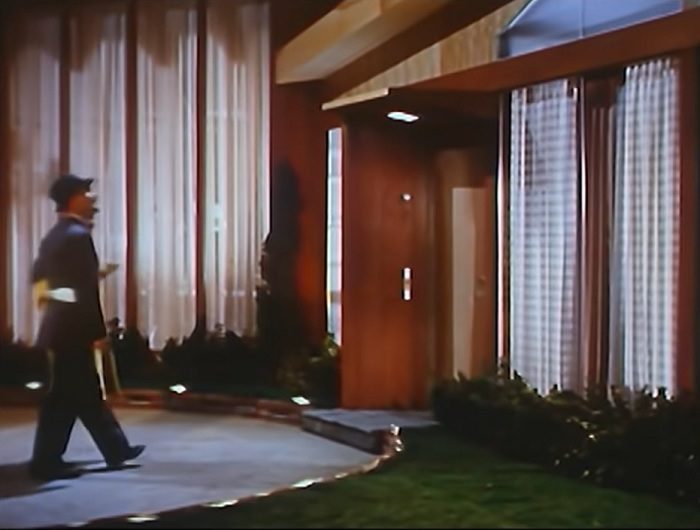The 1950s was a critical era for futurists. It Came from Outer Space and The Day the Earth Stood Still were among many landmark sci fi films hitting the silver screen; glass-domed houses were popping up around the nation; and Frank Hebert started writing Dune. It was the Golden Age of Futurism — and that vision included predictions for smart home technology, even though that term didn’t exist yet.
We recently came across this Westinghouse promotional video (shown above) titled, “Westinghouse Total Electric Home” which portrayed what the American manufacturing company predicted an “all-electric home” would look like and how it would assist homeowners in their daily lives.
Let’s see how accurate this imaginative video turned out to be.
What they imagined: walkway lighting

As the host of the program narrates, “rayescent strip lighting” lines the walkway leading to the front door and automatically illuminates when guests approach.
Were their predictions accurate?
An honest question for home systems designers: did “rayescent strip lighting” ever exist?
That questionable term aside, the actual concept of the lighting system in the video closely matches those in the 21st century, which focus on low-impact, minimal designs and motion-sensing.
What they imagined: video doorbells

“When [guests] arrive at the door, a television camera takes their picture to tell the hostess her guests have arrived,” the narrator explains.
This is by all means a video doorbell! If only Westinghouse could have known that 60 years later, Ring Doorbells would foster international interest in and increased accessibility to smart home technology and home security.
In the 2020s, homeowners are likely more concerned about the physical security of their home than in the 50s, with smart home security devices growing to over 10% adoption in all broadband households.
Were their predictions accurate?
Obviously, video doorbells ended up looking much different than the Westinghouse video portrayed them (though it would be interesting to see Ring create a mid-century box like the one pictured above, which looks like a cross between a Star Wars droid and a Teletubby pod).
The concept behind the technology, however, is essentially the same.
What they imagined: smart thermostats & room temperature control

The “weather center” puts users in charge of the entire home’s heating, cooling, and air filtering while providing total control of each room’s temperature.
In addition, “the amateur weather man” can ascertain outdoor wind direction, wind velocity, barometric pressure, temperature, and humidity.
Were their predictions accurate?
Westinghouse was right about the homeowner’s desire to have dialed-in temperature control throughout the house, but the user interface they imagined is obviously primitive (sorry, analog fans) and almost comically oversized. Modern, high efficiency smart thermostats only take up the space of one of the individual dials of the hypothetical system showed in the film.
Of course, the producers of this model smart home could not have known that digital readouts would become the norm, nor could they have predicted that most people would come to use the internet and mobile apps for weather forecasts. However, it’s not unreasonable to assume that owners of modern survivalist bunkers might enjoy having the ability to monitor barometric pressure, outdoor temperature, and wind velocity.
What they imagined: home theaters & high-fidelity audio

This section is clearly where Westinghouse’s designers dared to dream. They portray an entertainment center and home theater combined into one space, with televisions angling themselves toward the viewer, “stereo fidelity” records playing on speakers that surround listeners with music, and even a motorized projector screen coming down at the push of a button.
Were their predictions accurate?
Like its predictions for other parts of the home, this video’s portrayal of entertainment space wasn’t entirely off-base. Televisions became more advanced — more so in terms of their resolution and ability to connect to the internet, not their swiveling capabilities! — and vinyl record players clung to existence despite the popularity of other, less- or no-touch listening options.
It was interesting to hear the narrator mention “special speakers” that surround the listener — an oddly accurate predecessor of surround sound.
The video explicitly mentions that, “at the push of a button, the lights lower automatically, a large movie screen comes down, and it’s time for the show,” combining motorized screens and lighting control into one theoretical package that any designer of home theaters in the 21st century is familiar with.
Conclusions
Westinghouse certainly wasn’t the first to envision the technological advancements portrayed in their video, but it’s fascinating to see all of them described together in their infancy before the age of the smart home decades later.
Though the analog design of the systems described in the video became obsolete, the predicted intentions for complete user control were spot-on.







